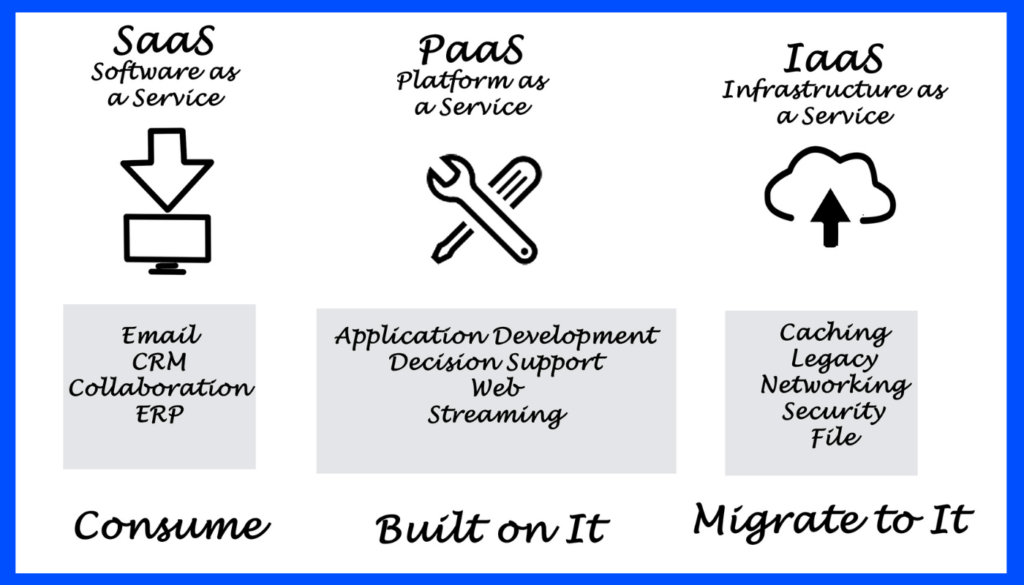IaaS PaaS and SaaS are three fundamental cloud computing models that offer different levels of cloud computing services and resources. Here’s an explanation of each:
- Infrastructure as a Service (IaaS): Infrastructure as a Service (IaaS) is a cloud computing model that provides the basic building blocks for cloud-based IT resources. It provides virtualized computing resources, such as virtual machines, servers, storage, and networking infrastructure, over the internet. Customers can use these resources to create their own IT environment, configure and manage them according to their requirements. Examples of IaaS providers are Amazon Web Services (AWS), Microsoft Azure, and Google Cloud Platform.
- Platform as a Service (PaaS): Platform as a Service (PaaS) is a cloud computing model that offers a platform for building, testing, deploying, and managing applications. It provides a complete development and deployment environment in the cloud, including hardware, operating system, programming language execution environment, web server, database, and other software components. PaaS allows developers to focus on building applications without worrying about the underlying infrastructure. Examples of PaaS providers are Heroku, Google App Engine, and Microsoft Azure.
- Software as a Service (SaaS): Software as a Service (SaaS) is a cloud computing model that delivers software applications over the internet. It allows customers to access software applications through a web browser or API without installing or managing any software on their local machines. The software is hosted and managed by the SaaS provider, who also takes care of security, maintenance, and updates. Examples of SaaS applications are Google Workspace, Salesforce, and Dropbox.
In summary, IaaS provides infrastructure resources, PaaS provides a platform for developing and deploying applications, and SaaS provides ready-to-use software applications. Each model offers different levels of abstraction and management, enabling customers to choose the level of control and responsibility they want over their IT environment.

Here are some examples of IaaS, PaaS, and SaaS in action:
- Infrastructure as a Service (IaaS) example: Amazon Web Services (AWS) is a popular IaaS provider that offers virtualized computing resources over the internet. With AWS, customers can rent virtual machines, storage, and networking infrastructure to build their own IT environments. For example, a startup might use AWS to launch a new website by renting virtual servers and storage to host the website’s content and data.
- Platform as a Service (PaaS) example: Heroku is a PaaS provider that offers a platform for building, deploying, and managing web applications. Heroku provides a complete development environment with a programming language execution environment, web server, database, and other software components. Developers can use Heroku to focus on building their applications without worrying about the underlying infrastructure. For example, a software company might use Heroku to deploy and manage their web application without having to configure and maintain servers and databases.
- Software as a Service (SaaS) example: Salesforce is a SaaS provider that delivers customer relationship management (CRM) software over the internet. Customers can access Salesforce’s CRM application through a web browser or API without installing any software on their local machines. Salesforce manages the software, security, maintenance, and updates for their customers. For example, a sales team might use Salesforce to manage their customer data, track sales, and collaborate with their team without having to install and maintain CRM software on their own computers.
















